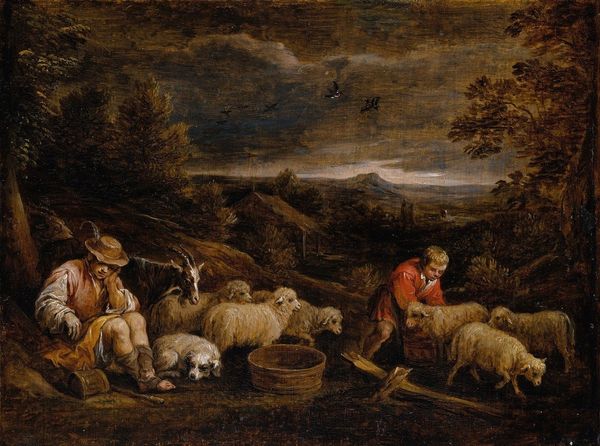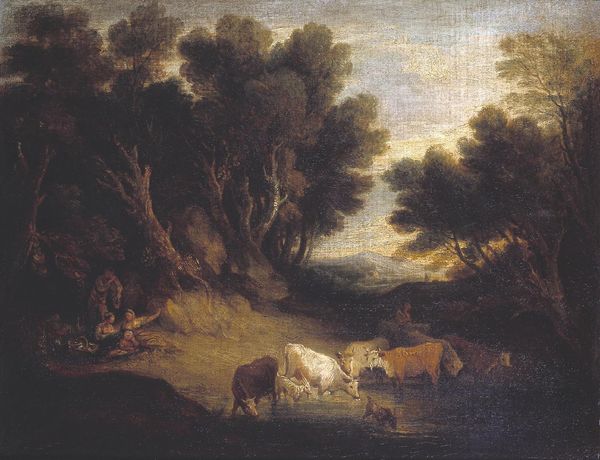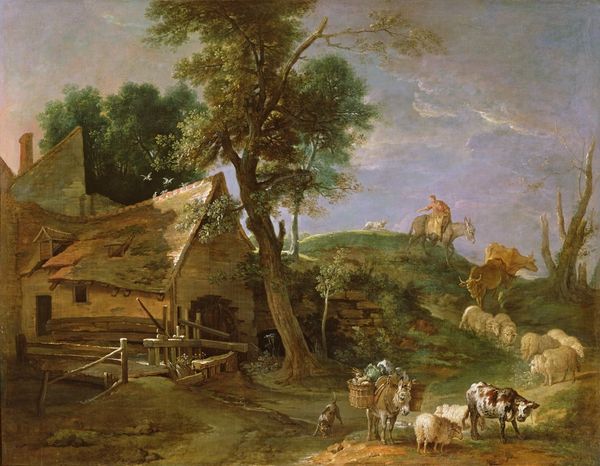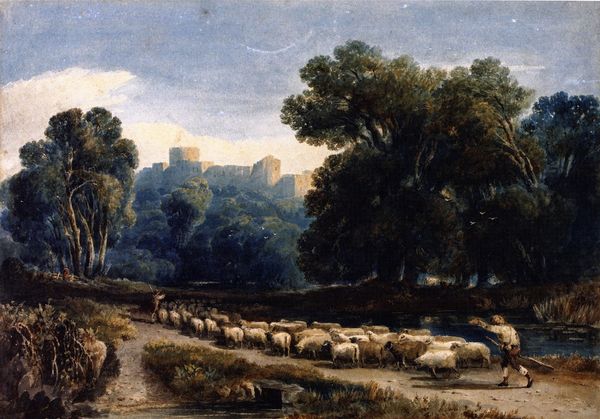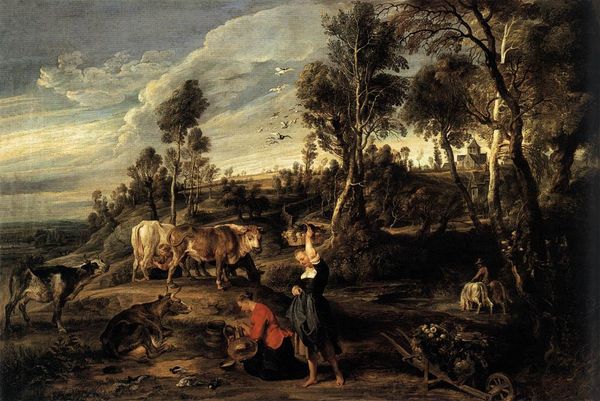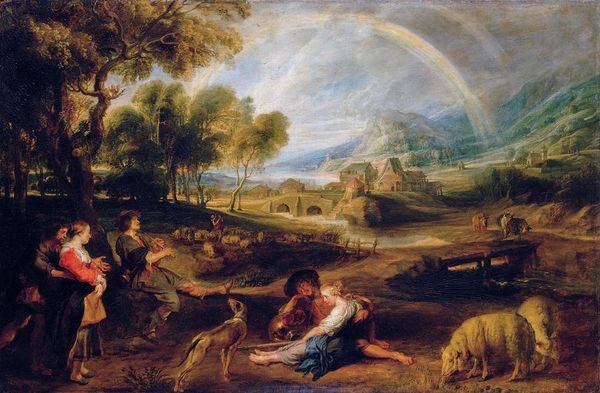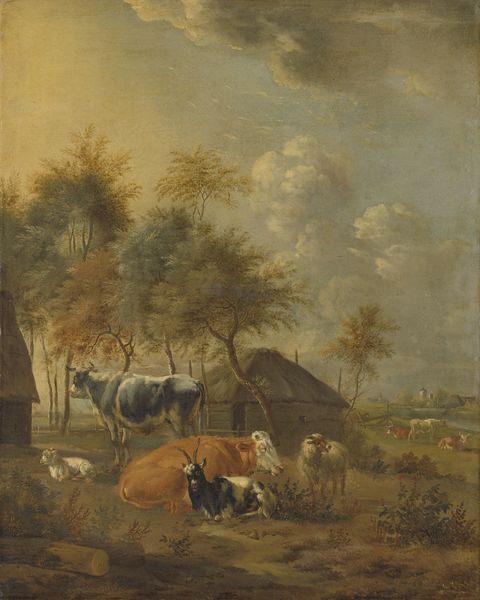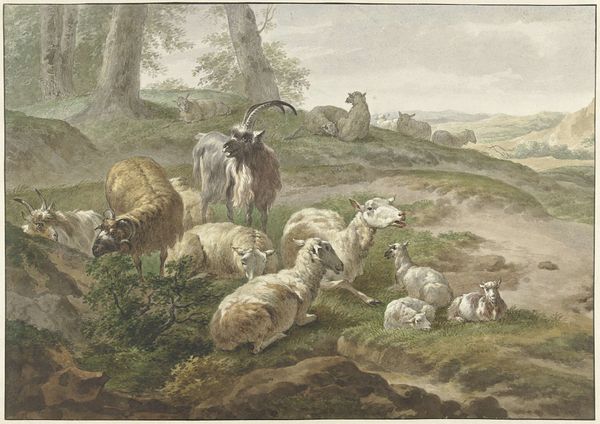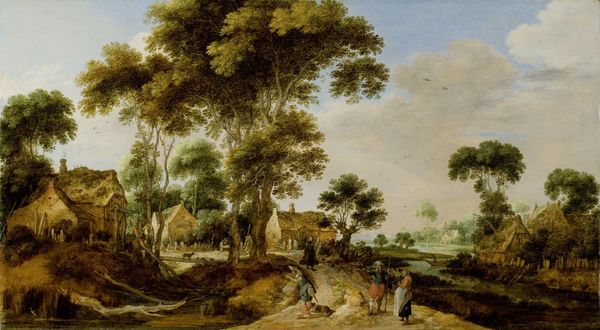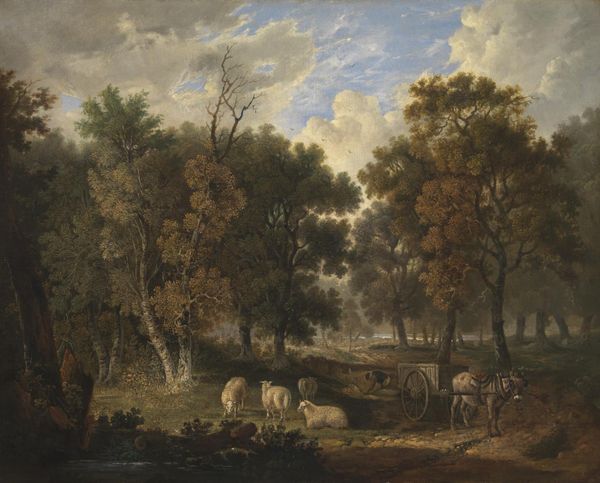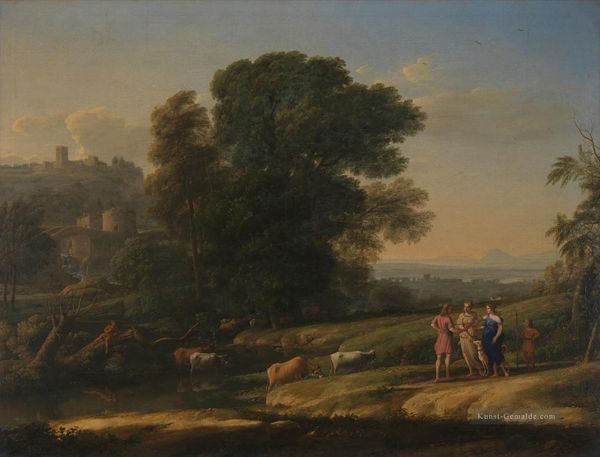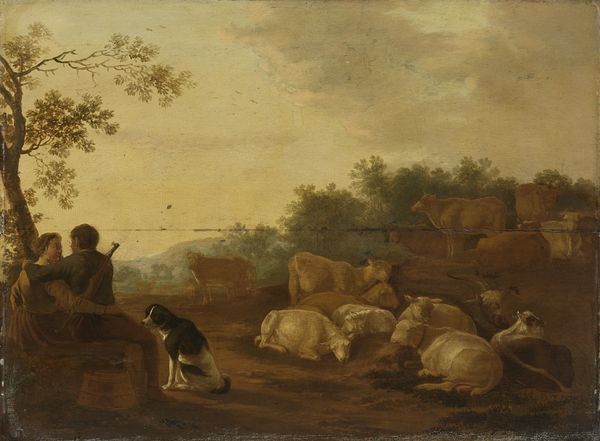
oil-paint
#
baroque
#
oil-paint
#
landscape
#
figuration
#
oil painting
#
genre-painting
Copyright: Public Domain: Artvee
Curator: Ah, here we are at "Sunset Landscape with a Shepherd and his Flock," rendered in oil paint, likely dating to the Baroque period and attributed to David Teniers the Younger. Immediately, one senses the artist’s capacity to depict tranquility. The careful arrangement, the muted palette—it speaks of repose. Editor: It's interesting how idyllic it seems at first glance. But then you start thinking about the labor involved in sheep herding, the precariousness of relying on livestock in this era, the materials the artist used, and a different picture starts to emerge. Curator: Precisely, but within this genre scene, observe how the diagonal structure leads the eye from the shepherd, with his flock occupying the center foreground, across the landscape toward the horizon line. Notice how the Baroque use of color emphasizes the golden light of sunset which defines the overall pictorial mood and unifies all compositional elements. The architecture of the castle is beautifully rendered to lead one into an alternate narrative in juxtaposition to the labor of the shepherd in the foreground. Editor: And that’s where the art gets intriguing, doesn’t it? We see a very definite choice by Teniers in using materials such as oil paints – allowing a kind of luminosity, which when placed alongside the iconography of everyday pastoral existence, elevates, arguably, both the artist and subject's status by engaging with this medium. I'm also thinking about what the materials were in creating these works–where and how were the pigments acquired? Who prepared the canvas? Curator: True, yet isn't that focus on production sometimes obscuring the purely visual analysis, the intrinsic meaning within the work's structure? Look at how he's deployed shadow and light, directing the eye— almost as though guiding the viewer through an allegorical composition that evokes universal themes. Editor: Yes, but thinking about the actual application of labor enriches our understanding. The fact that the materials had to be created and assembled by laborers reveals that images such as these exist not just as beautiful things divorced from real production but in tandem with an acknowledgement that many unknown and unsung hands contributed to making these visions of 'leisure' possible! Curator: A valuable perspective! Thank you, that makes me reconsider how one perceives this tranquil scene. Editor: Likewise; thank you for guiding me through the visual intricacies that elevate a genre painting into something more profound.
Comments
No comments
Be the first to comment and join the conversation on the ultimate creative platform.
